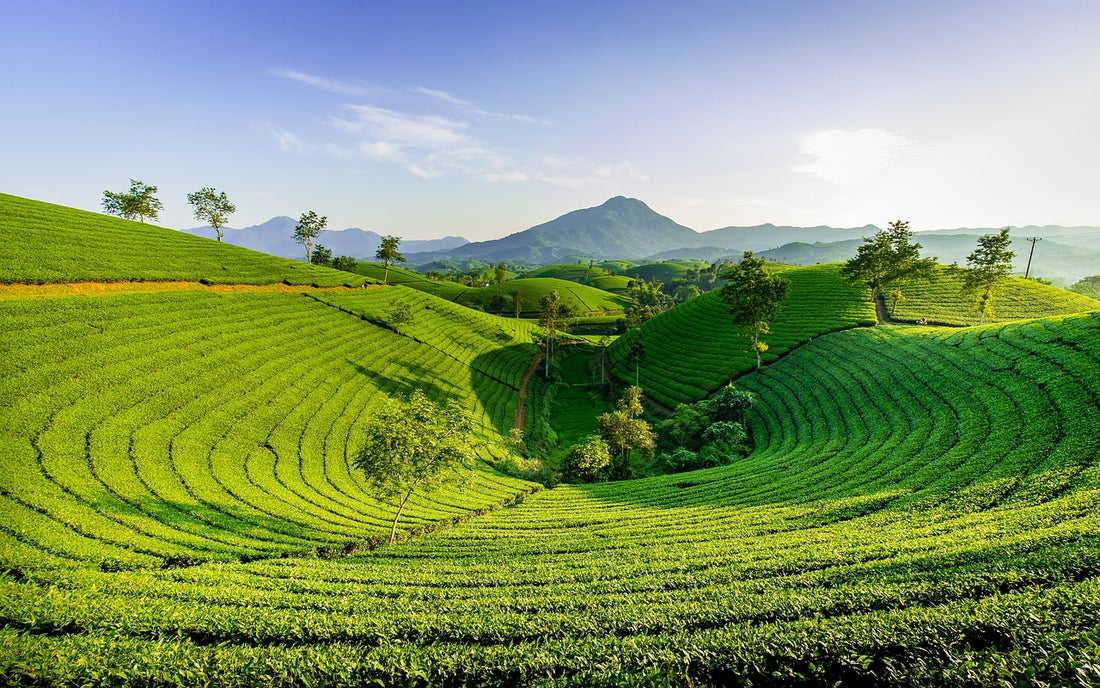
The Silk Road: A History of Tea, Travel, and Exploration
The Silk Road is one of the most famous trade routes in history, connecting Asia and Europe for over 1500 years. Merchant caravans transported spices, silk, precious stones, metals, textiles, and many other exotic products along this route, which stretched from China to Europe.
But the Silk Road was much more than just a trade route. It also facilitated significant cultural exchanges, particularly in the field of gastronomy. One of the most valuable products exchanged along this route was tea, a beverage that is now consumed worldwide. In this article, we will explore the history of tea on the Silk Road, as well as the journeys and explorations that took place along this famous trade route.
The history of tea on the Silk Road
Tea originated in China, where it has been cultivated for over 2000 years. Initially, it was used mainly for medicinal purposes, but over time it became a popular beverage throughout China. By the 8th century, tea had begun to be exported along the Silk Road, where it was highly valued by merchants and travelers.

At first, tea was a rare and expensive product, reserved for the rich and the elites. But over time, its popularity increased, and it became a common drink in many countries. Chinese tea merchants began to export more and more tea along the Silk Road, helping to popularize this beverage throughout Central Asia and the Middle East.
In the 15th century, tea had reached Russia and Europe, where it quickly became popular. Europeans began to cultivate their own tea in colonies like India and Sri Lanka, but Chinese tea remains highly prized by connoisseurs.
Tea also played an important role in cultural exchanges along the Silk Road. Chinese merchants brought their culture and expertise in tea to the countries they traversed, while also adopting new tea practices and traditions from other countries. For example, the preparation and consumption of tea in Mongolia influenced tea practices in China and Central Asia.
The travels and explorations along the Silk Road
The Silk Road was a dangerous trade route, traveled by bandits and criminals. However, this did not stop explorers from traveling on this historic route.
One of the first explorers of the Silk Road was Zhang Qian, an envoy of the Han Emperor Wudi of China. In 138 BC, Zhang Qian was sent on a mission to explore the regions located to the west of China. He traveled for thirteen years and covered more than 25,000 kilometers.
During his journey, Zhang Qian visited many regions of Central Asia, including the kingdom of Ferghana and the Talas Valley. He also established diplomatic relations with the local kings and helped to open new trade routes.
The Silk Road was also an important route for travelers and explorers seeking to discover new territories and establish trade relations with new regions. One of the most famous explorers of the Silk Road was Marco Polo, an Italian merchant who traveled through Central Asia and China in the 13th century.

Marco Polo visited China and discovered tea for the first time. He described tea as a drink "as black as ink." Marco Polo also noted that tea was used to "purify and warm the body" and was amazed by the large number of varieties of tea available.
